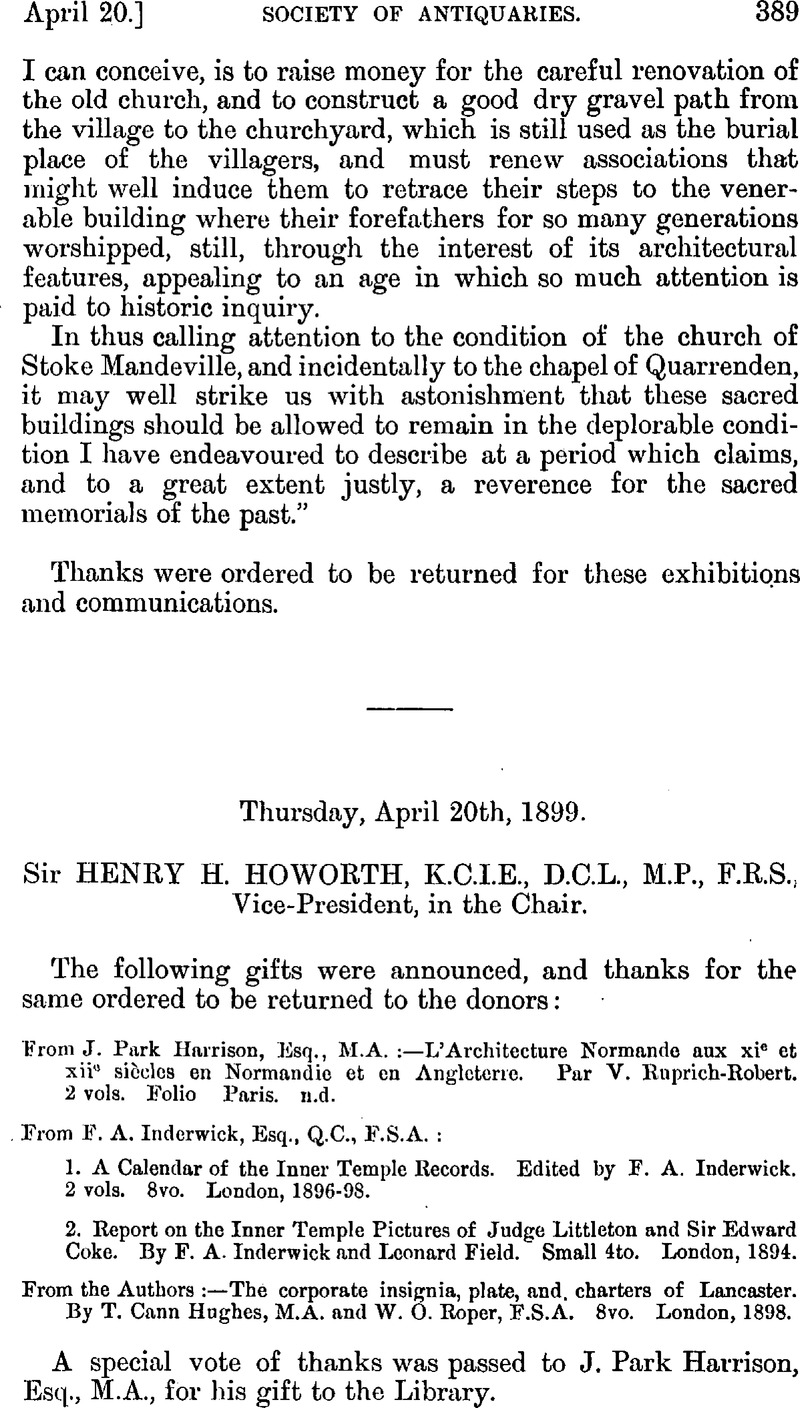Article contents
Thursday, April 20th, 1899
Published online by Cambridge University Press: 10 May 2010
Abstract

- Type
- Proceedings
- Information
- Copyright
- Copyright © The Society of Antiquaries of London 1899
References
page 395 note * Homeric Hymn to Apollo, 449–50.
page 396 note * Saturnalia I. xvii. 66.
page 396 note † Annali dell. Inst., 1841, p. 52 and Tav. D.
page 396 note ‡ Inscriptiones Graecae falsae vel suspectae Galliae, 368. Cf. Benndorf, in Arch. Zeitung, 1865, p. 70.
page 396 note § Doctrina Nummorum Veterum, I. 196.
page 396 note ‖ I. Suppl. p. 371.
page 397 note * Fondation Eugène Piot, 1895, p. 141.
page 397 note † Overbeck, Gr. Kunstmythologie, Bd. 5, p. 64, note (,). Cf. Gerhard, Auserlesene Vasenbilder, 22 ; and Élite Céramique, 2, 55.
page 399 note * Ov. Gr. Kunstm, Bd. 5, p. 41 ; Éite céram. I. 62.
page 399 note † Beschreibung der Vasensammlung im Antiquarium, 2060.
page 401 note * Matthew Arnold, Empedocles on Etna.
page 401 note † Gerhard (Gr. und etr. Trinksch., p. 7), suggests that a beard is given to Apollo because he is in the same series as Hermes, Zeus, and Poseidon, all bearded deities. Apollo's beard is much smaller than the other three.
page 401 note ‡ Wordsworth, The Excursion, Book iv.
page 401 note § One is in the House of the Vettii, another in the Strada dell' Abbondanza. See Annali, 1850 ; and Müller-Wieseler-Wernicke, pl. vi. 2. In the latter picture the twelve Olympian gods occur, and Neptune alone has a beard.
page 401 note ‖ Ib. pl. v. 7.
page 402 note * It has been suggested that the person really represented is not Zeus, but Alexander in the guise of Zeus, the gem being copied from the picture by Apelles. See Pliny N. H. 35, 92. The signature NEICOY seems to be modern. Müller-Wieseler-Wernicke, Taf. iv. Cf. Raspe, Tassie, 962, pl. xviii., a reference for which I have to thank Mr. A. H. Smith. Also King, Handbook of Engraved Gems, pl. lxxxiv.
page 402 note † xviii. 415.
page 402 note ‡ Matthew Arnold, Balder Dead.
page 402 note § γραος immer mit θνατος. Autenrieth, Wörterbuch zu den homerischen Gedichten.
page 402 note ‖ Lewis Morris, Epic of Hades.
page 405 note * Abt. I., Blatt 111.
page 405 note † Lepsius, R., Discoveries in Egypt, Ethiopia, and Sinai (Ed. Mackenzie, London, 1853), 268, 269Google Scholar: Burckhardt, John L., Travels ín Nubia (London, 1819), 81.Google Scholar
page 407 note * History of Egypt, i. 194
page 407 note † Hist. of Art in Ancient Egypt (London, 1883), ii. 42.Google Scholar
page 415 note * Anecdota Oxoniensia—The Churches and Monasteries of Egypt. Attributed to Abu Saleh, the Armenian. Edited and translated by Evatts, B. T. A. and Butler, A. J. (Oxford, 1895), 263.Google Scholar
- 1
- Cited by




